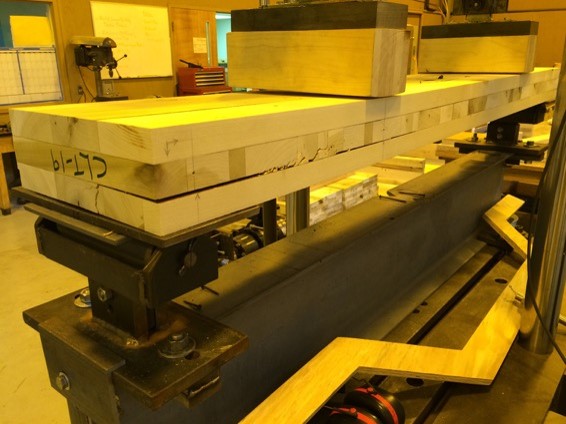By Henry Quesada
*Published in the August 2019 Newsletter of the Virginia Loggers Association
The Department of Sustainable Biomaterials at Virginia Tech has secured $249,000 from the US Forest Service to continue research on the use of hardwood lumber for the manufacturing of structural cross-laminated timber (CLT) panels.
Currently, there is no market for hardwood lumber in structural CLT panels because APA/PRG 320, the CLT standard, does not allow it. According to the standard, only softwood lumber can be used for structural CTL panels. However, a CLT mill interested in manufacturing and selling hardwood CLT panels for structural use could pursue a custom certification by a third party to make hardwood CLT panels available to the construction market.

In this project, Virginia Tech will work with Smartlam in Montana to produce CLT panels made of yellow poplar. The panels will be tested by APA. Hardwood organizations such as the Appalachian Hardwood Manufacturers, the National Hardwood Lumber Association, and the Hardwood Manufacturers Association are partnering with Virginia Tech to promote the project among their members and to find potential donors of yellow poplar lumber for the manufacturing of the CLT panels to be tested.
Another barrier that this new project is addressing is the structural grading of hardwood lumber. Currently, grading of hardwood lumber is based on appearance and not on structural performance. Rules to grade hardwood lumber have been developed but no one producing hardwood lumber is using these rules, mostly because there is no market for structural hardwood lumber. This new grant will work with NELMA, a grading agency, to train hardwood sawmills on structural grades for hardwood lumber.
Other factors that might impact the use of hardwood lumber for structural CLT panels are:
- Prices: Prices of #1 and #2 softwood lumber are usually less than $450 per thousand board feet. However, species such as yellow poplar and soft maple might have a chance to compete in terms of prices.
- Volume: A medium size CLT mill will produce around 50,000 m3 or 21.2 million board feet per year. An average hardwood sawmill produces less than 20 million board feet per year. Several hardwood sawmills would work together in order to supply lumber to such a CLT mill.
- Dimensions: Hardwood lumber is currently produced in random widths and CLT panels require fixed widths.
- Adhesion: Chemical companies have been able to produce glues that work very well with softwood species such as spruce, Douglas fir, and southern yellow pine. The same glues have been used successfully with yellow poplar but other hardwood species might require a different formulation.
The market for CLT panels in the US is expected to reach over 2 million m3 or 850 million board feet in the next 10 years. The current manufacturing capacity in the US is less than 200,000 m3. This represents a huge opportunity for the hardwood industry.
If you have any questions about this project, please contact Dr. Henry Quesada at quesada@vt.edu.

